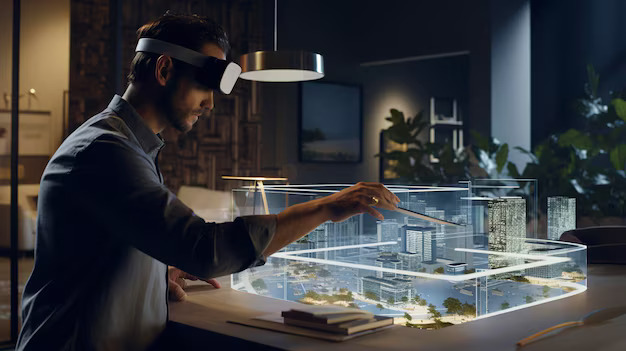
The Future of CAD: Key Trends Shaping 2025 and Beyond
As we stand on the cusp of 2025, the landscape of Computer-Aided Design (CAD) is undergoing transformative changes. These advancements are not only enhancing the capabilities of designers and engineers but also redefining the very nature of design processes across industries. With more professionals exploring CAD software purchase options to stay ahead in the evolving market, selecting the right tools has become crucial. In this comprehensive exploration, we delve into the key trends shaping the future of CAD, offering insights into what professionals can anticipate in the years ahead.
The Evolution of CAD Software
Traditionally, CAD software has been a cornerstone in fields such as architecture, engineering, and manufacturing. Over the years, it has evolved from simple 2D drafting tools to sophisticated 3D modeling platforms. Today, the focus is shifting towards more integrated, intelligent, and collaborative solutions that leverage cutting-edge technologies to meet the complex demands of modern design. With more professionals looking for CAD software purchase options that cater to specific industry needs, the demand for advanced solutions continues to grow. Many companies are now evaluating the best CAD packages to ensure they have access to tools that streamline design workflows and improve efficiency.Key Trends Shaping the Future of CAD
-
Integration of Artificial Intelligence and Machine Learning
- Generative Design: AI algorithms can explore a vast array of design possibilities based on specified parameters, allowing designers to select the most efficient and effective solutions. This approach not only accelerates the design process but also fosters innovation by presenting unconventional design options.
- Predictive Analysis: Machine learning models can predict potential design flaws or performance issues early in the development stage, reducing the need for costly revisions and enhancing the overall quality of the final product.
-
Cloud-Based Collaboration
- Real-Time Collaboration: Teams can simultaneously edit and review designs, ensuring that all stakeholders are aligned and reducing the time required for feedback loops.
- Scalability and Flexibility: Cloud-based solutions offer scalable resources, enabling organizations to adjust their computing power and storage needs dynamically. This is particularly beneficial for handling large and complex design projects.
-
Enhanced Simulation and Virtual Reality Integration
- Immersive Prototyping: VR allows designers to experience their models in a 3D space, offering a deeper understanding of scale, aesthetics, and functionality before physical prototypes are built.
- Comprehensive Simulations: Enhanced simulation tools enable the analysis of how designs will perform under various conditions, leading to more informed decision-making and optimized designs.
-
Emphasis on Sustainability and Eco-Friendly Designs
- Eco-Conscious Materials: CAD software incorporates databases of sustainable materials, assisting designers in making environmentally friendly choices.
- Energy Efficiency Analysis: Tools that assess the energy consumption and environmental impact of designs are becoming integral, guiding the creation of products that are not only innovative but also responsible.
-
Customization and Personalization
- Parametric Design: CAD tools enable designers to create customizable templates that can be easily adjusted to meet individual client needs without starting from scratch.
- Mass Customization: Advanced CAD systems support the efficient design of products tailored to specific consumer preferences, bridging the gap between bespoke craftsmanship and mass production.
The Role of ALCAD in the Future of CAD
In this rapidly evolving landscape, ALCAD is at the forefront, embracing these trends to provide cutting-edge solutions for design professionals. By integrating AI and machine learning, ALCAD's software enhances generative design capabilities, offering users innovative tools to explore a multitude of design possibilities efficiently. ALCAD's commitment to cloud-based collaboration ensures that teams can work seamlessly across geographies, accessing and editing projects in real time. This approach not only boosts productivity but also fosters a more cohesive and dynamic design process. Furthermore, ALCAD recognizes the importance of sustainability in design. The software includes features that assist in selecting eco-friendly materials and analyzing projects' environmental impact, empowering designers to make responsible choices.Additionally, ALCAD provides access to the best free CAD software, allowing designers at all levels to take advantage of state-of-the-art tools without financial constraints.By staying ahead of industry trends, ALCAD ensures that professionals seeking CAD software purchase options have access to the most advanced features available.
Conclusion
Intelligent automation, enhanced collaboration, immersive simulations, and a strong focus on sustainability mark the future of CAD. As these trends continue to develop, professionals equipped with advanced CAD tools will be better positioned to create innovative, efficient, and responsible designs. With more options available for those looking to buy CAD software online, choosing the right solution has never been more critical. Whether seeking the best CAD packages for commercial use or the best free CAD software for learning and experimentation, the future of CAD promises exciting possibilities. Experience the future of design with ALCAD's advanced CAD solutions. Embrace innovation, enhance collaboration, and lead the way in sustainable design.Connect with us, to know more.